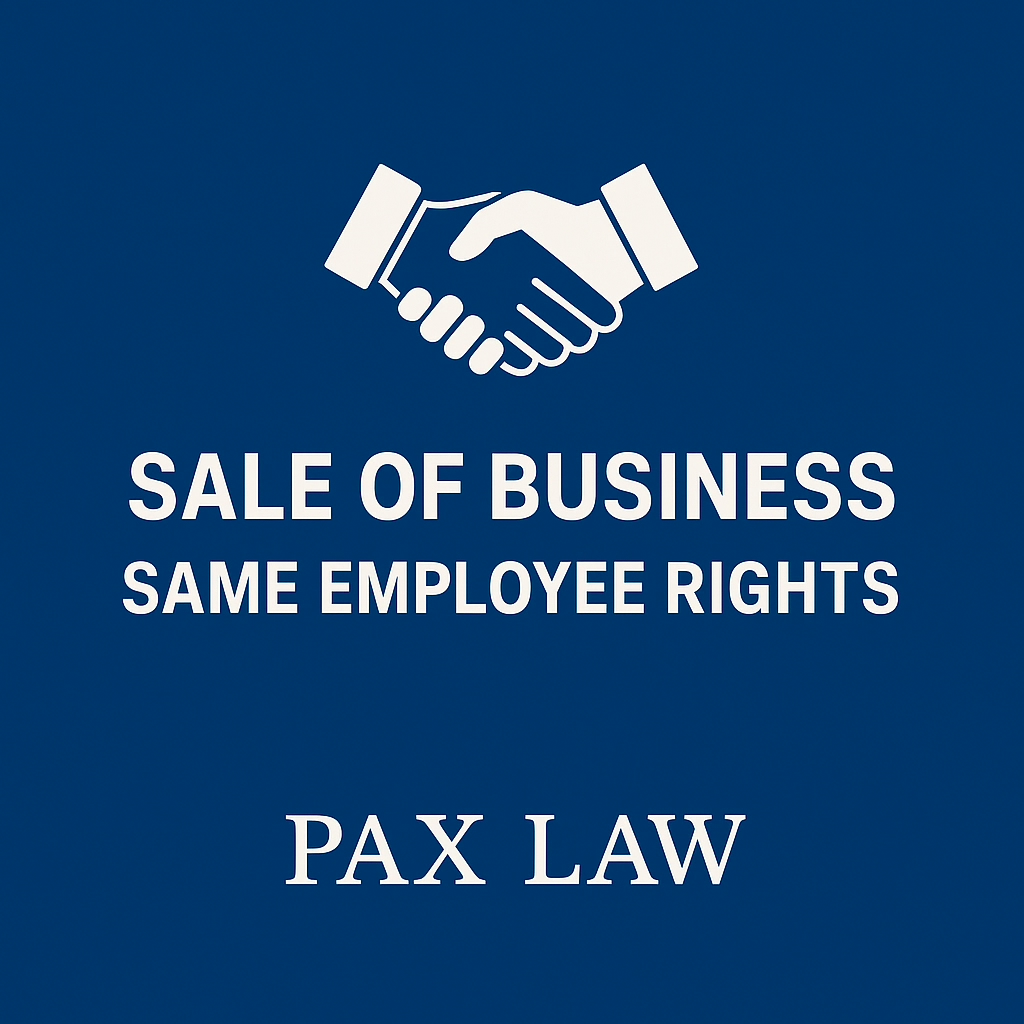Employees in British Columbia (BC) are protected by a combination of provincial and federal laws that govern wages, working conditions, benefits, and termination rights. Understanding these rights ensures that workers receive fair treatment and that employers comply with legal standards.
Table of contents
Provincial Employment Standards
The BC Employment Standards Act (ESA) sets out the minimum rights and protections for employees in most sectors of the province. An important fact to know is that the requirements of the ESA and the regulations are considered “minimum requirements” and therefore any agreement to waive said requirements has no effect.1 These include:
Wages and Pay
- Minimum Wage: The current minimum wage in BC is $17.40 per hour (as of June 2024), subject to annual increases.
- Overtime Pay:2
- More than 8 hours per day or 40 hours per week: Paid at 1.5x the regular wage.
- More than 12 hours per day: Paid at 2x the regular wage.
- Vacation Pay:3
- Employees with 1 year of service: 2 weeks of vacation (paid at 4% of gross earnings).
- Employees with 5+ years of service: 3 weeks of vacation (paid at 6% of gross earnings).
- Statutory Holidays:4 Employees employed for at least 30 calendar days and who have worked for 15/30 calendar days preceding the statutory holiday qualify for paid time off on stat holidays or premium pay if they work.
- Deductions:5 Employers cannot deduct wages for mistakes, uniforms, or business costs unless permitted.
Work Hours and Breaks
- Daily & Weekly Limits:6
- Employers cannot force employees to work more than 40 hours per week unless they receive overtime pay. This however does not apply for the purposes of an employee who is working under an averaging agreement under section 37 of the ESA.
- Meal Breaks:7
- Employees are entitled to at least one 30-minute unpaid meal break after 5 hours of work.
- Rest Periods:8
- Workers must have at least 8 consecutive hours off between shifts unless an emergency occurs.
Leaves and Job Protection
The ESA guarantees various job-protected leaves, including:
- Maternity Leave:9 Up to 17 weeks unpaid for birth mothers.
- Parental Leave:10 Up to 61 weeks unpaid (for birth mothers) or 62 weeks unpaid (for other parents).
- Sick Leave:11 After 90 consecutive days of employment, employees are entitled to 5 paid sick days and 3 unpaid sick days per year.
- Family Leave:12 Employees are entitled to 5 days of unpaid leave. Includes bereavement leave, compassionate care leave, and leave related to domestic violence.
Termination and Severance Pay
- Notice Periods:13
- Less than 3 months: No notice required.
- 3 months – 1 year: 1 week notice.
- 1 – 3 years: 2 weeks notice.
- 3+ years: 3 weeks + an additional week per year of service, up to a maximum of 8 weeks.
- Severance Pay: If an employer terminates a worker without cause and without proper notice, they must provide pay in lieu of notice.
- Wrongful Dismissal: If an employee is fired without cause and not given sufficient notice or severance, they may be entitled to legal compensation.
Federal Employment Standards
Certain industries are federally regulated, meaning employees fall under the Canada Labour Code (CLC) rather than provincial laws. These include:
- Banks
- Telecommunications companies
- Airlines
- Railways
- Postal and courier services
- Federal government departments
Key Rights Under the Canada Labour Code
- Minimum Wage: Must be equal to or higher than the BC minimum wage.
- Overtime:14 Paid at 1.5x the regular wage or given 1.5 hours of time off with pay for each hour of overtime worked subject to subsections 174 (2) to (5).
- Statutory Holidays: Federally regulated employees receive 10 paid holidays.
- Annual Vacation:15 Federally regulated employees are entitled to at least
- 2 weeks of vacation annually after completing 1 year of employment with the same employer.
- 3 weeks of vacation annually after completing 5 consecutive years of employment with the same employer.
- 4 weeks of vacation annually after completing 10 consecutive years of employment with the same employer.
- Maternity & Parental Leave: up to 78 weeks of combined maternity and parental leave.
- Termination & Severance:16
- Employees with 3+ months of service must receive 2 weeks’ notice or severance pay.
- Employees with 3+ years of service must receive 3 weeks’ notice or severance pay.
- Employees with 4+ years of service must receive 4 weeks’ notice or severance pay.
- Employees with 5+ years of service may qualify for additional compensation.
Additional Rights and Protections
Besides wage and leave entitlements, employees have rights under human rights legislation and workplace safety laws.
Human Rights Protections
- The BC Human Rights Code and the Canadian Human Rights Act protect employees from discrimination based on:
- Race
- Gender
- Sexual orientation
- Religion
- Disability
- Family status
- Age
- Workplace Harassment: Employees have the right to work in a harassment-free environment. Employers must take steps to prevent and address workplace bullying and harassment.
Workplace Safety (WorkSafeBC)
- Employees have the right to a safe work environment.
- Employers must provide safety training, protective equipment, and proper hazard management.
- Workers can refuse unsafe work without retaliation.
Union Rights
- The Labour Relations Code allows employees to join a union and engage in collective bargaining.
- Employers cannot retaliate against employees for joining or forming a union.
To Conclude…
Understanding employee rights in British Columbia and federally regulated industries is essential for ensuring fair treatment in the workplace. Employees are entitled to minimum wages, overtime pay, vacation, statutory holidays, leave entitlements, and protection against wrongful termination. Additionally, laws such as the BC Human Rights Code and WorkSafeBC regulations safeguard employees from discrimination and unsafe working conditions.
If you believe your rights have been violated, you can seek help from:
- BC Employment Standards Branch (for provincial matters)
- Canada Labour Program (for federally regulated employees)
- WorkSafeBC (for workplace safety concerns)
- BC Human Rights Tribunal (for discrimination cases)
Knowing your rights allows you to advocate for fair treatment and seek legal remedies when necessary.
Important: Please note that the information here is not meant to be legal advice. Do not solely rely on the information given here; it is important that you consult with a lawyer regarding any legal advice. Pax Law Corp. is not responsible for any reliance on the contents of this blog post. Any faces posted on this blog post is totally AI generated and they are not intended to represent any person in the real world. Any similarities are completely coincidental.
- Section 4 of the ESA ↩︎
- Sections 35 and 40 of the ESA ↩︎
- Sections 57 and 58 of the ESA ↩︎
- Sections 44 and 45 of the ESA ↩︎
- Section 21 of the ESA ↩︎
- Section 35 (1) of the ESA ↩︎
- Section 32 (1) of the ESA ↩︎
- Section 36 (2) and (3) ↩︎
- Section 50 (1) of the ESA ↩︎
- Section 51 (1) of the ESA ↩︎
- Section 49.1 of the ESA ↩︎
- Section 52 of the ESA ↩︎
- Section 63 (3)(a) of the ESA ↩︎
- Section 174(1) of the CLC ↩︎
- See Government of Canada Website linked here. ↩︎
- Section 230 (1.1) of the CLC ↩︎


